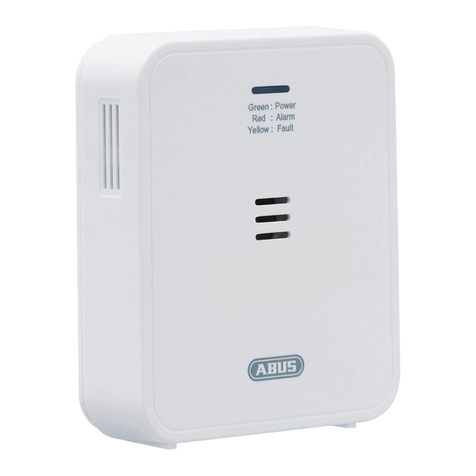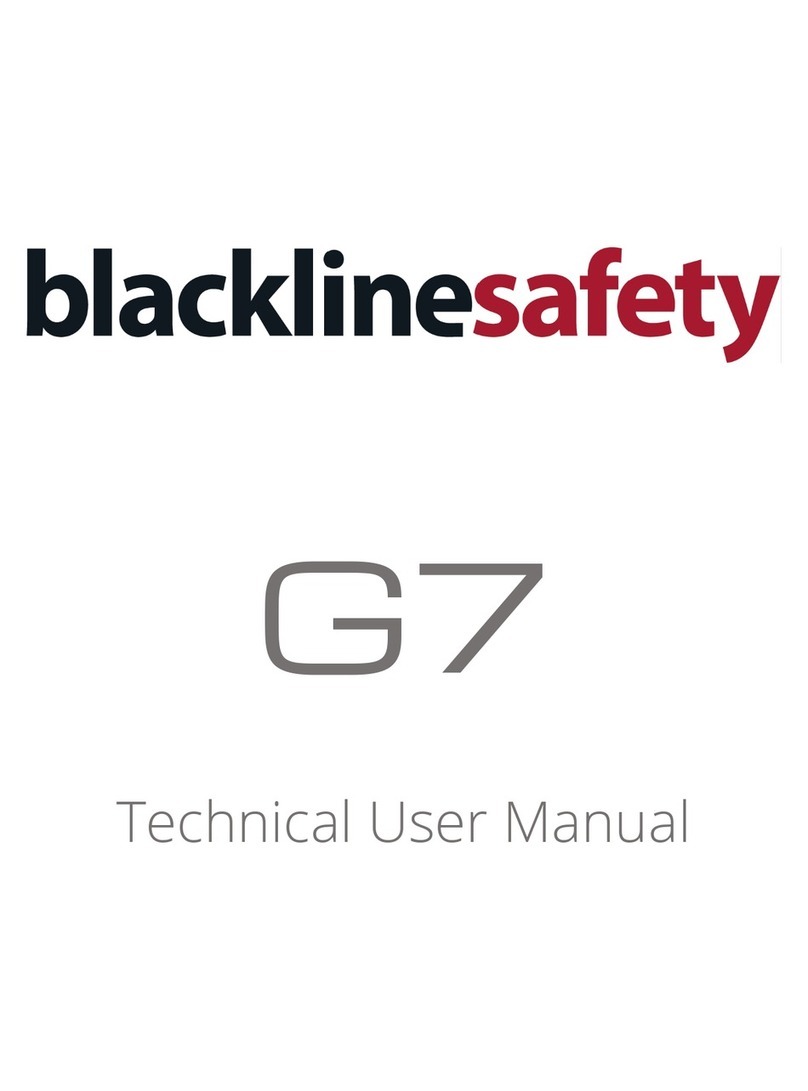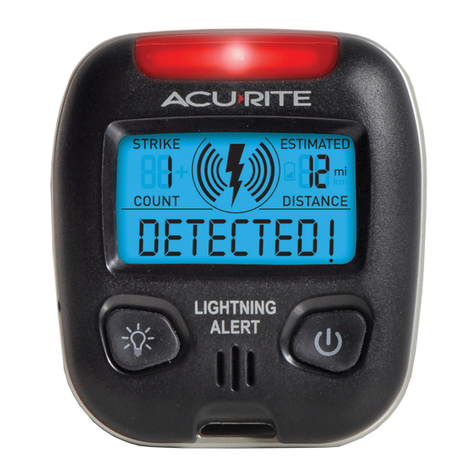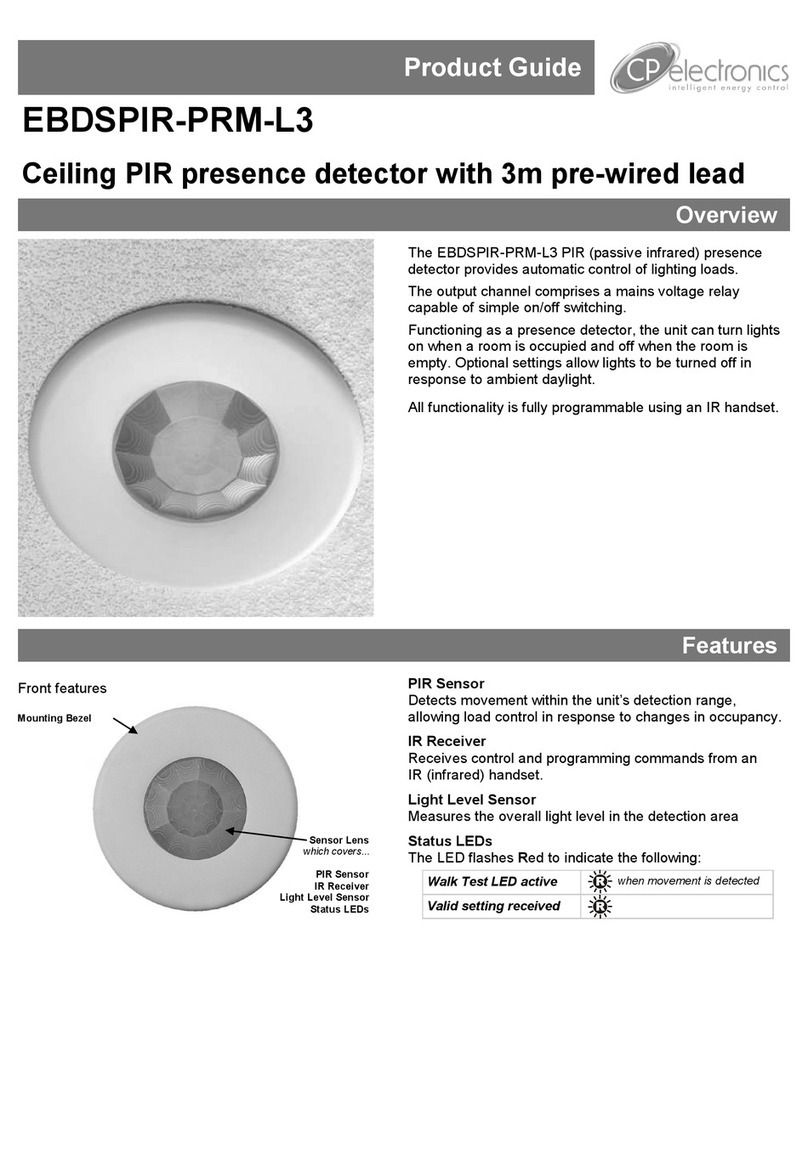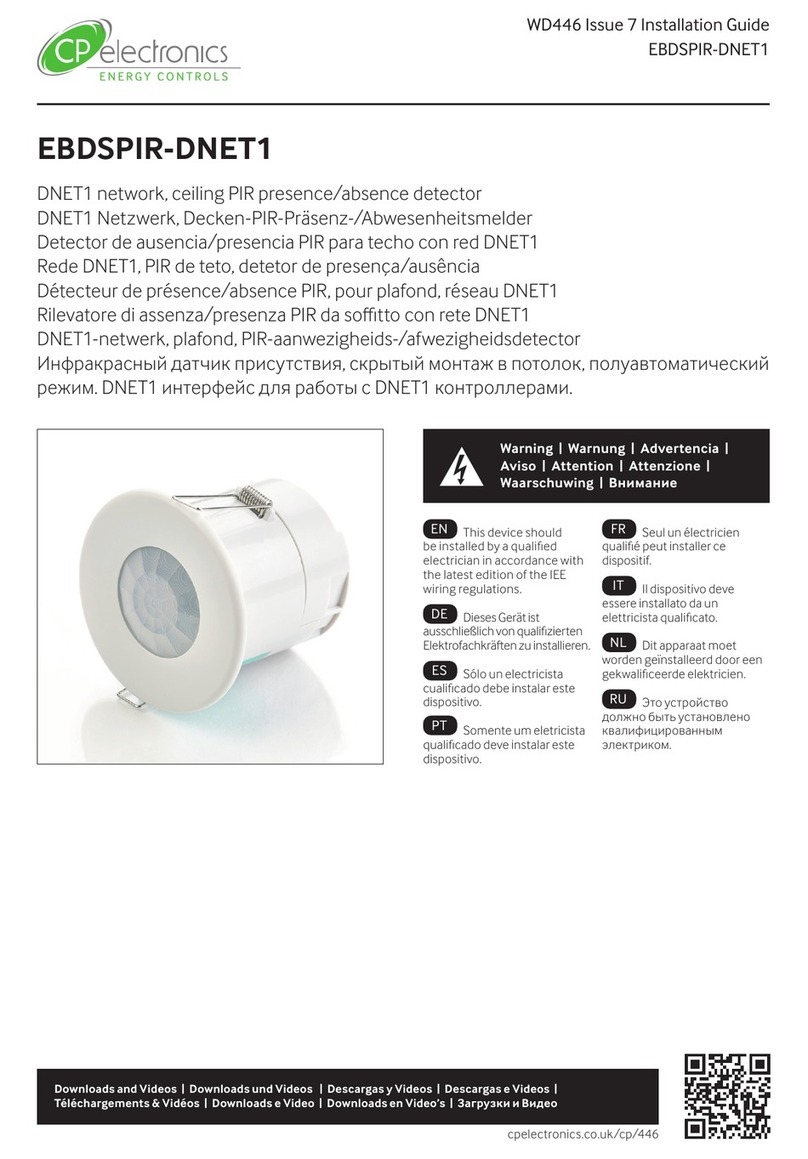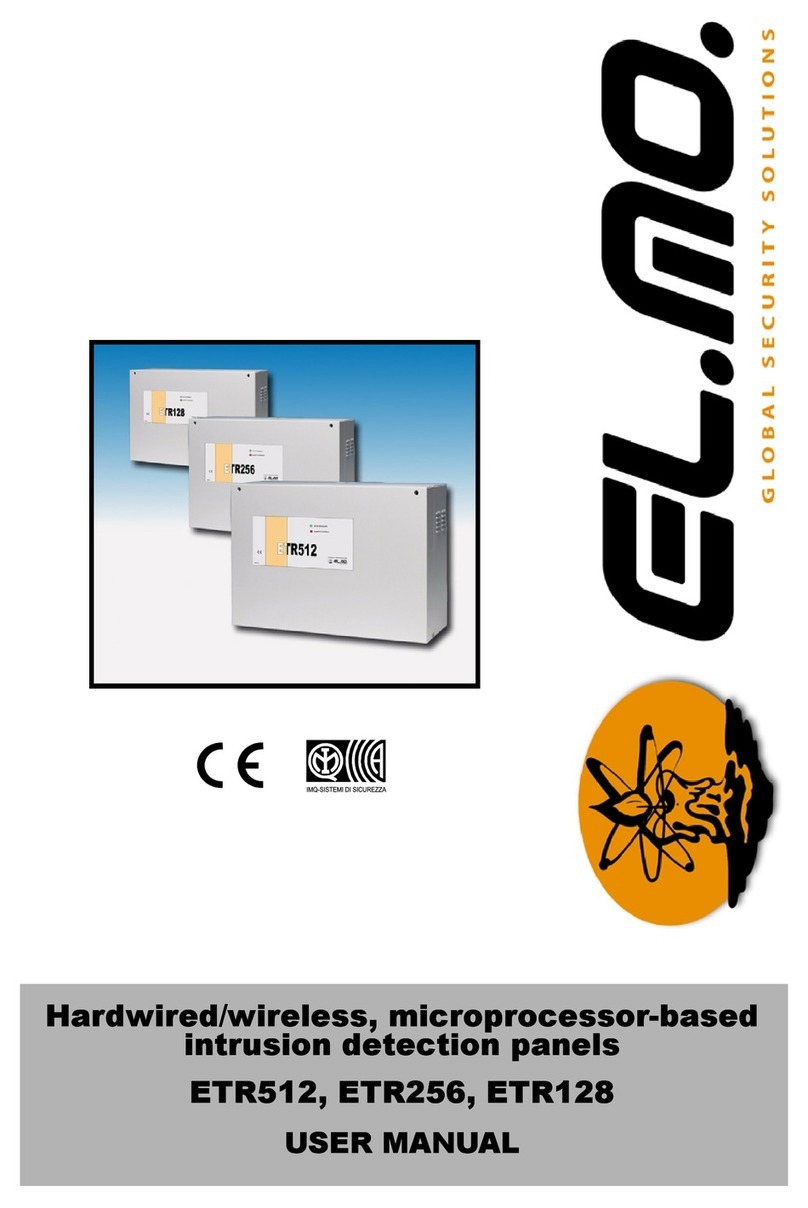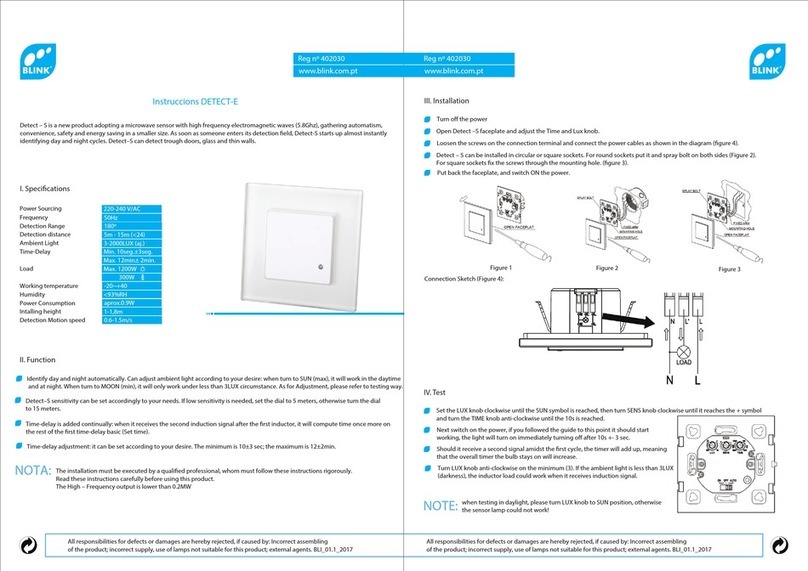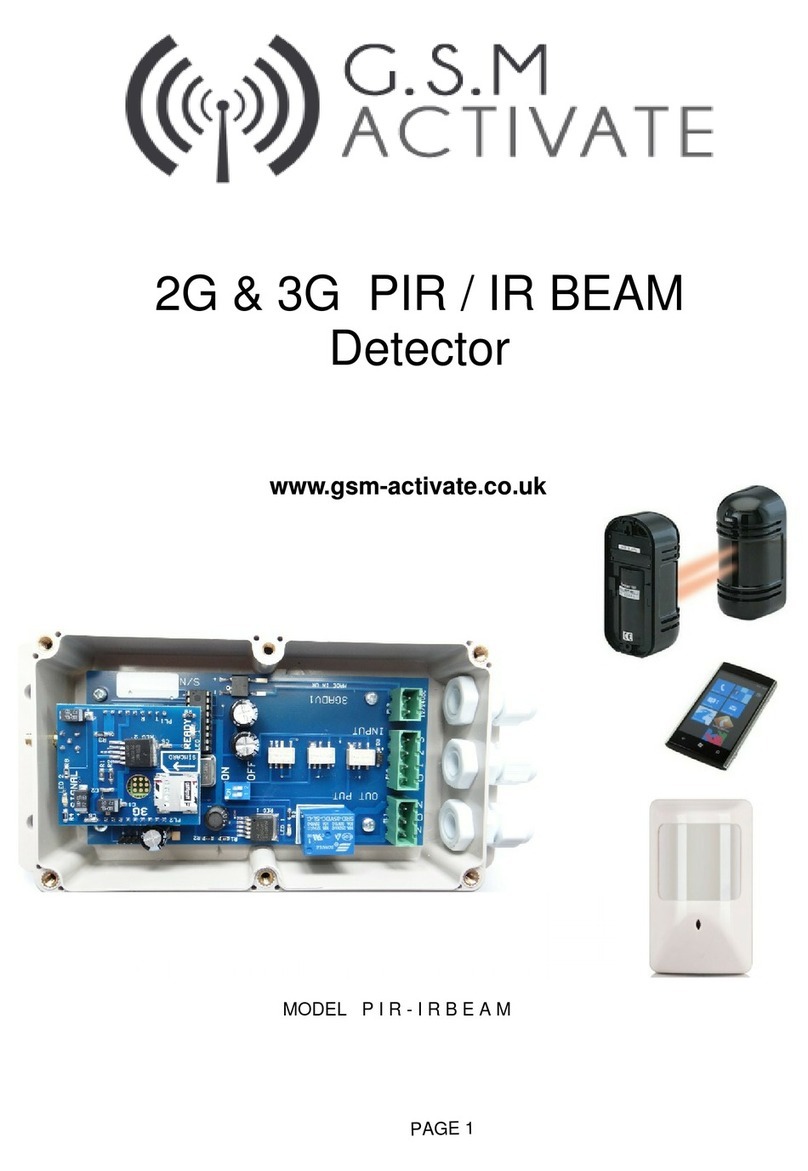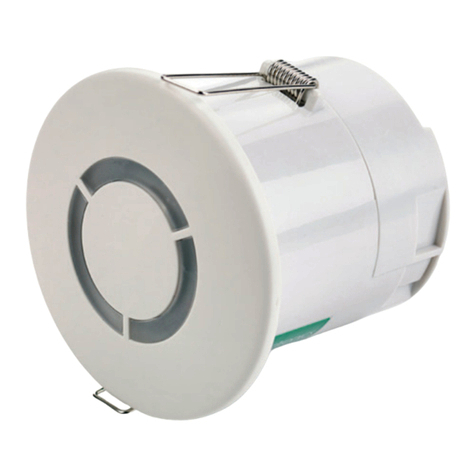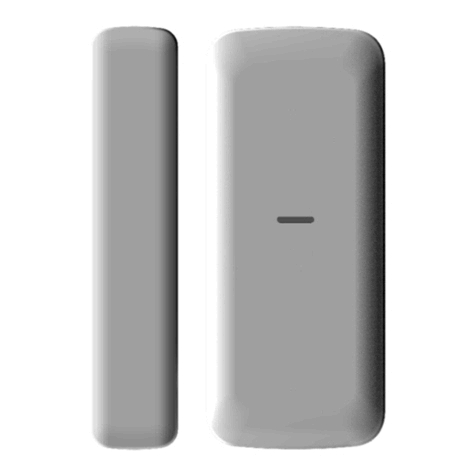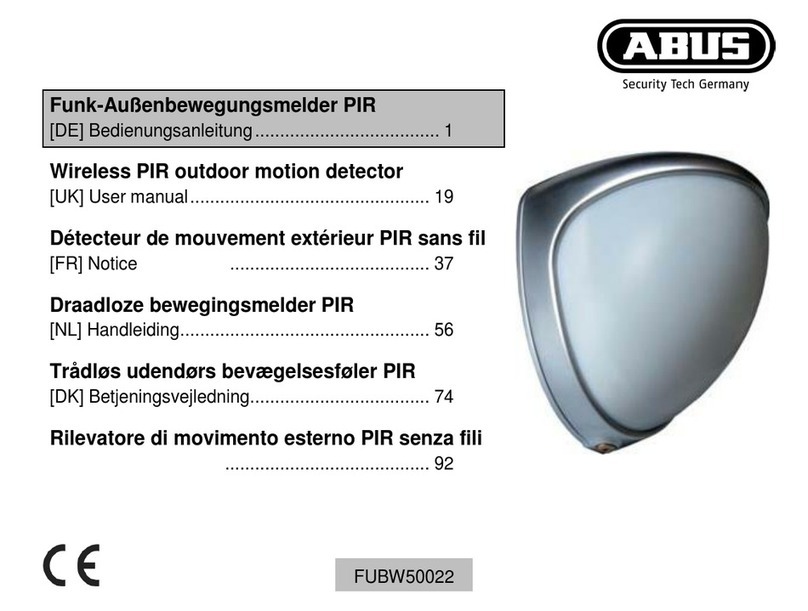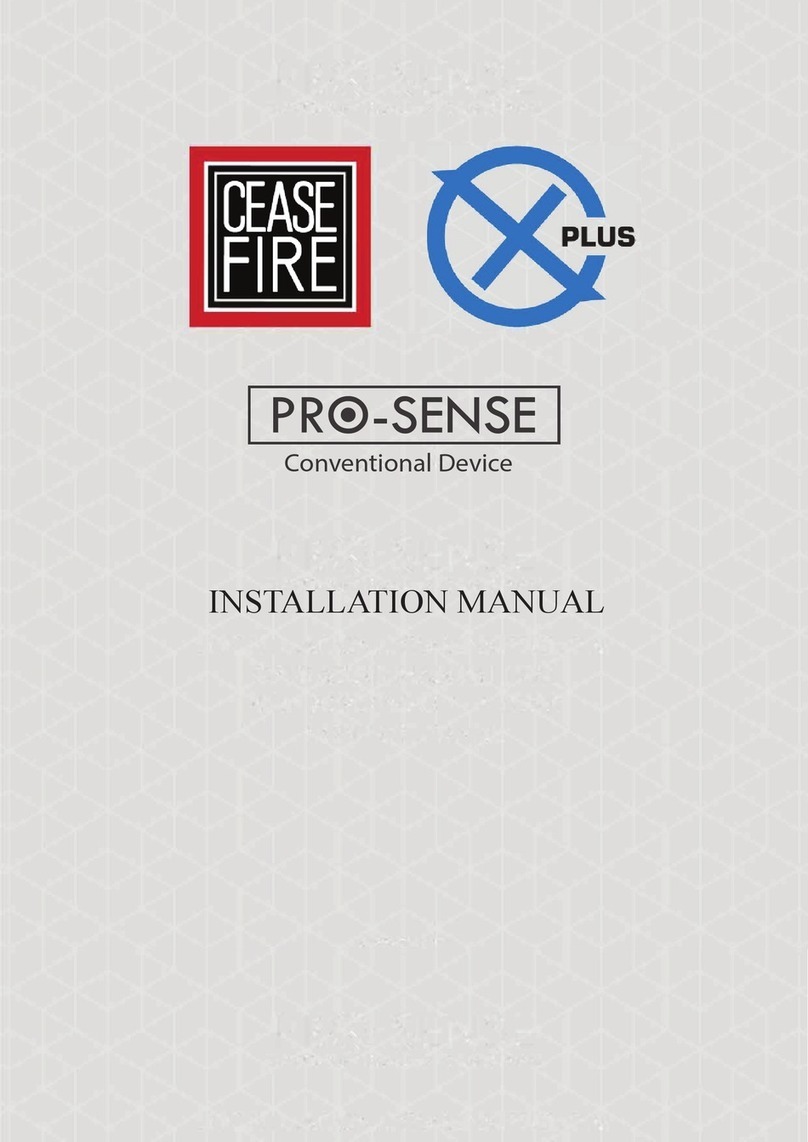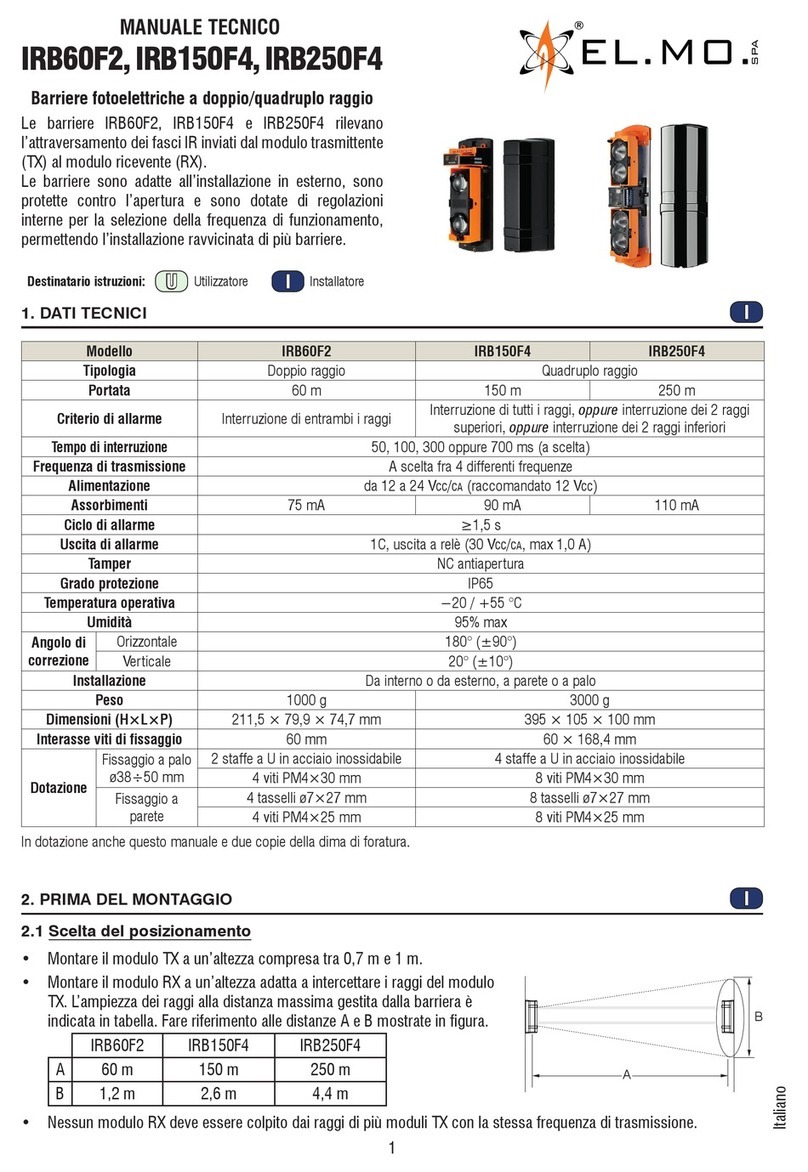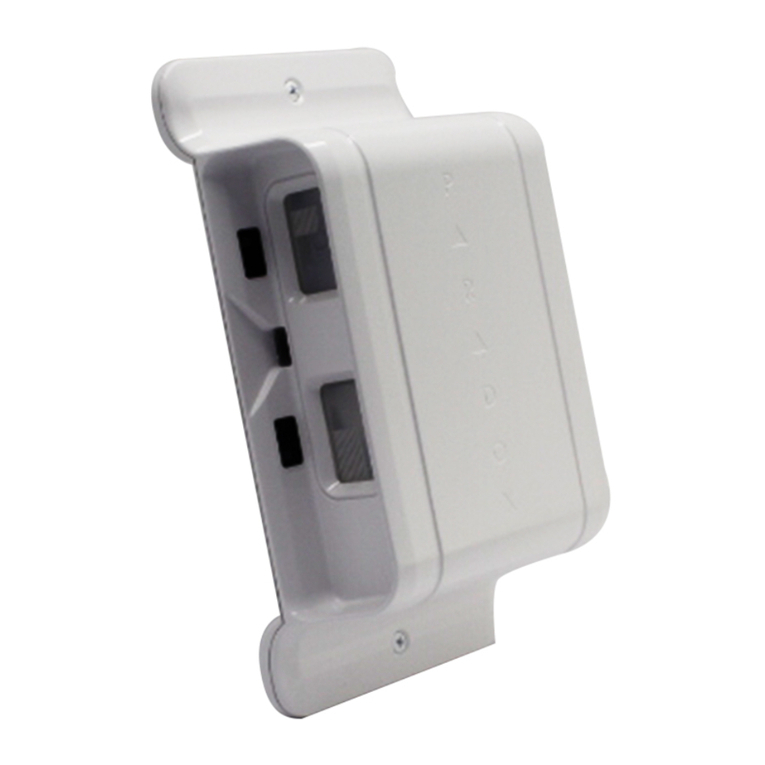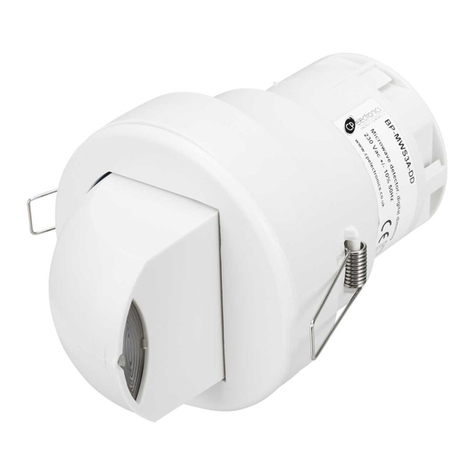MicroCAFS PBK MC6SP12 User manual

Page 1 of 12
Operating Instructions
Compressed Air Foam Devices
MicroCAFSPBK®MC6SP10
MicroCAFSPBK®MC6SP9/12
MicroCAFSPBK®MC6SP50 T
MicroCAFSPBK®MC6SP50 S
The operation Instructions must be read and understood in their
entirety before initial operation.
Updated: 11/02/2019
Subject to change without notice!

Page 2 of 12
Technical Specifications MC6SP10:
Extinguishing capacity: 10.4 litres
Compressed air cylinder: 2 litres at 300 bar
Operating pressure: approx. 7.5 bar
Hose length: 2 metres
Weight: approx. 22.5 kg
Foam agent: e.g. 0.3 litres AFFF 3%, details on page 8
Throwing range: up to approx. 11.5 m (wet)
max. ballistic trajectory
Temperature range: min. + 0°C to max. + 60°C
Working time
in continuous operation
Wet foam: approx. 55 seconds
Flow rate approx. 11 l/min water
Dry foam: approx. 115 seconds
Flow rate approx. 5.4 l/min water
Terminology: „wet“ means high density
„dry“ means lower density
Rating according to EN3: 21A, 233 B (at 9 litres standard charge,
setting “wet”)
Regulated according to the EN3 and the Pressure Equipment Directive 2014/68/EU.
The device is a special extinguishing device and does not conform to certain
requirements of the EN3. The device is not a portable fire extinguisher as defined in
EN3.
The device is a pressure device according to the Pressure Equipment Directive
2014/68/EU and carries the CE-code CE0029.

Page 3 of 12
Technical Specifications MC6SP9/12:
Extinguishing capacity: 9 litres standard /12 litres total
approx. 12.5 litres total cylinder capacity
Compressed air cylinder: 2 litres at 200 bar
Operating pressure: approx. 6 bar
Hose length: 2 metres
Weight: approx. 22.3 kg at 9 litres charge
Foam agent at 9 litres: e.g. 0.27 litres AFFF 3%, details on page 8
Throwing range: up to approx. 10 m (wet)
max. ballistic trajectory
Temperature range: min. + 0°C to max. + 60°C
Working time
in continuous operation
Wet foam: approx. 59 seconds at 9 litres charge
approx. 75 seconds at 12 litres charge
Flow rate approx. 9.2 l/min water
Dry foam: approx. 139 seconds at 9 litres charge
Approx. 185 seconds at 12 litres charge
Flow rate approx. 3.9 l/min water
Terminology: „wet“ means high density
„dry“ means lower density
Rating according to EN3: 21A, 233 B (at 9 litres standard charge,
setting “wet”)
Regulated according to the EN3 and the Pressure Equipment Directive 2014/68/EU.
The device is a special extinguishing device and does not conform to certain
requirements of the EN3. The device is not a portable fire extinguisher as defined in
EN3.
The device is a pressure device according to the Pressure Equipment Directive
2014/68/EU and carries the CE-code CE0029.

Page 4 of 12
Technical Specifications MC6SP50 T:
Extinguishing capacity: 50 litres *
Compressed air cylinder: 6 litres at 300 bar
Operating pressure: approx. 7.5 bar
Hose length: 10 m ½“ hose of good dimensional stability
Weight: approx. 95 kg at 50 litres charge
Foam agent at 50 litres: e.g.1.5 litres AFFF 3%, details on page 8
Throwing range: up to approx. 13 m (wet)
max. ballistic trajectory
Temperature range: min. + 0°C to max. + 50°C
Working time
in continuous operation
Wet foam: approx. 168 seconds
Flow rate approx. 18 l/min water
Dry foam: approx. 420 seconds
Flow rate approx. 7.1 l/min water
Terminology: „wet“ means high density
„dry“ means lower density
The device is a pressure device according to the Pressure Equipment Directive
2014/68/EU and carries the CE-code CE0029.
The pressure equipment is not approved as fire equipment according to EN1866.
* Exact vessel capacity can be little less than 50 litres, e. g. approx. 47.5 litres, so
the nominal filling volume in this case is 45 litres similar to EN 1866 instead of
50 litres. However, vessels may be filled completely without any air reservoir, so
that in consideration of allowed undershooting of 5% the nominal capacity of
50 litres is achieved anyway.

Page 5 of 12
Technical Specifications MC6SP50 S:
Extinguishing capacity: 50 litres *
Compressed air cylinder: 6 litres at 300 bar
Operating pressure: approx. 7.5 bar
Hose length: 15 m hose with coupling D
Weight: approx. 100 kg at 50 litres charge
Foam agent at 50 litres: e.g. 1.5 litres AFFF 3%, details on page 8
Throwing range: up to approx. 15 m (wet)
max. ballistic trajectory
Temperature range: min. + 0°C to max. + 50°C
Working time
in continuous operation
Wet foam: approx. 130 seconds
Flow rate approx. 23 l/min water
Dry foam: approx. 390 seconds
Flow rate approx. 7.7 l/min water
Terminology: „wet“ means high density
„dry“ means lower density
The device is a pressure device according to the Pressure Equipment Directive
2014/68/EU and carries the CE-code CE0029.
The pressure equipment is not approved as fire equipment according to EN1866.
* Exact vessel capacity can be little less than 50 litres, e. g. approx. 47.5 litres, so
the nominal filling volume in this case is 45 litres similar to EN 1866 instead of
50 litres. However, vessels may be filled completely without any air reservoir, so
that in consideration of allowed undershooting of 5% the nominal capacity of
50 litres is achieved anyway.

Page 6 of 12
Safety Instructions:
Observe the following instructions so as to protect yourself and others form harm
and the device and environment from damage:
•The operator is obliged to follow existing relevant national regulations by
performing inspections before initial operation and subsequent repeated
inspections with respect to the Pressure Equipment Directive 2014/68/EG.
•Only instructed people may use and charge the compressed air foam device.
•Only authorised people in a permitted range may carry out maintenance or
repair.
•Only original spare parts may be used.
•The extinguishing agent jet may not be directed towards the respiratory
organs, eyes or ears of people or animals.
•Oberserve the manufacturer’s safety instructions for the additive added to
water.
•The device may only be opened when the pressure in the extinguishing agent
vessel has been completely released using the discharge nozzle.
•The device may not be operated if it shows any visible signs of damage.
•Only the manufacturer or personnel authorized by the manufacturer may
perform work on the pressure reducer.
Otherwise the manufacturer does not accept any liability or responsibility.
•Electric live equipment is to be disconnected before work starts.
•The device may not be subjected to temperatures above or below the
specified temperatures.
•Always ensure that both the M74x2 screw connection on the extinguishing
agent vessel and the high-pressure connection with the knurling screw on the
high-pressure valve are carried out correctly, and that the associated seals
are in place.
•Only authorised personnel may charge the compressed air cylinder only with
breathing air. Avoid inner pollution of the cylinder with other substances.
Always guarantee that the compressed air cylinder is adequately secured, e.
g. against falling over.
•After finishing the extinguishing process or having exhausted the content of
liquid close the air pressure valve by turning the hand wheel immediately.
Take care that the valve is closed before any further handling procedures.
•This manual is a vital component of the device. The owner of the device is
responsible for handing out the manual in case of purchase to the next owner.
Take care to provide a present manual.
•For present information concerning the product look at www.microcafs.com

Page 7 of 12
General Tactical Instructions:
•Generally speaking, successful extinguishing by sweeping with the jet pipe
requires foam to be discharged across the largest area possible in the
shortest time. Approaching the fire in an aggressive manner, with adequate
personal protection, is successful for small and forming fires.
•When fighting fires of flammable solid materials, the initial „wet“ setting is to
be kept until flame formation and heat radiation have visibly/Perceptibly
reduced. Damping-down operations can then be carried out with the “dry”
setting. The guard tube of the extinguishing agent discharge nozzle can be
inserted in hollow spaces of the debris to foam the pockets of embers.
•In the case of flammable liquids, the energy of the compressed air foam jet is
to be reduced on suitable reflecting surfaces. This permits the necessary
unpressurised depositing of compressed air foam onto the liquid’s surface. If
heat radiation allows a short distance, the “dry” setting can be used.
•As one of the uses of the device is damping-down operation, during which
the foam can also be used in the debris for example to fill up hollow spaces,
ensure that any electric live equipment that may be come into contact with is
disconnected before work starts, as is customary in damping-down
operations.
•Operating personnel must be trained and familiarised with the device before
using it. In order to operate the device, sufficient experience is required.

Page 8 of 12
General Technical Instructions:
For smooth operation of the device, the following points should be observed:
•The device functions with all commercially available foam agents in the
concentrations specified by the manufacturer. Please not that the foam agent
must be storable in the pre-mixed state with water.
•Depending on the additive used, it is recommended cleaning the device by
rising with warm water.
•The mixture ratio prescribed by the foam agent manufacturer is to be
observed, particularly when the device is overcharged. Overcharging is not
critical.
•From our experience, it is recommended adding the foam agent after approx.
two thirds charging with water in order to achieve a more thorough mixing.
•The device should not be exposed to an aggressively salty environment for
an extended period of time because the foam selector can become fixed in
such impurities. The selector should be cleaned regularly and when exposed
to such impurities according to the operating instructions.
•Operating readiness should be checked regularly.
Important! For care and maintenance use only lubricants which are approved by
MicroCAFS. (Super-O-Lube by Parker).
Nonobservance can lead to agglutination due to chemical reaction of the improper
lubricant with the foaming agent. Consequently, moving parts could become immobile
and operation may be effected negatively.

Page 9 of 12
Extinguishing agent
cylinder
Compressed air
cylinder
Carrying frame
Mixing chamber
head
Pressure reducer
Extinguishing agent
hose with discharge
nozzle
MC6SP9/12
Extinguishing agent
cylinder
Compressed air
cylinder
Carrying handle
Pressure reducer
MC6SP10
Extinguishing agent
hose with discharge
nozzle
Mixing chamber
head
Device Description + Operation:

Page 10 of 12
Extinguishing agent
cylinder
Compressed air
cylinder
Carrier
Mixing chamber
head
Pressure reducer
Extinguishing agent
hose with discharge
nozzle
MC6SP50T
Extinguishing agent
container
Compressed air
cylinder
Carrying frame
Mixing chamber head
Pressure reducer
Extinguishing agent
hose with discharge
nozzle
MC6SP50S
1. remove nozzle with hose
2. open valve of compressed air cylinder by turning hand wheel
3. direct nozzle towards fire and pull the trigger
4. switch foam quality from wet to dry for mob up

Page 11 of 12
To guarantee easy moving of screw connection M 74 x 2 provide lubrification whenever
necessary, but avoid lubricants in vessel.
Charging the Device:
To guarantee smooth operation and right function and to avoid damage and unjuries
always take care to proceed in following sequence:
•Close the compressed air cylinder valve.
•Release the remaining pressure in the extinguishing agent cylinder with the
discharge horn.
•Open M 74 x 2 screw connection.
•Remove the fixing of the compressed air cylinder.
•Remove pressure reducer from the compressed air cylinder and take it out.
•Only instructed people may charge the compressed air cylinder with
compacted breathing air.
•Lift of mixing chamber, do not bend dip tube.
•Charge cylinder with water and additives, observe charging amounts
according to page 2 –4 of this users manual.
•Insert compressed air cylinder in mounting and secure.
•Replace mixing chamber with dip tube and close M 74 x 2 screw hand-tigh, max.
torque 40Nm.
•Close the knurling nut on the compressed air cylinder hand-tight, max. torque
40Nm.
•Secure the hand wheel of the compressed air cylinder to the metal body of the
valve, make a mark with sealing wax or fixing varnish, or attach an appropriate
paper seal so that it can be seen whether the hand wheel has been moved on
visual inspection.
•Set bolt to “wet” and fix with appropriate seal so that the bolt is always in this
position on start of operation. This facilitates checking operation readiness.

Page 12 of 12
Maintenance Instructions:
The device is to be inspected by competent personnel every two years. The Pressure
Equipment Directive 2014/68/EU (PED) and existing relevant national regulations are
to be observed. The following visual inspections, in particular, are to be performed.
Check:
•Extinguishing agent cylinder for corrosion inside and out.
•Compressed air cylinder with valve for damage.
•Rupture disk for dirt and damage.
•Screw thread and screw of the high-pressure hose and the union nut on the
mixing chamber and on the extinguishing agent cylinder.
•High-pressure hose and low-pressure hose, as well as the discharge horn, for
damage.
Replace damaged parts.
Carry out regular inspections of the compressed air cylinder according to the
Transportable Pressure Equipment Directive 2010/35/EC (TPED).
Authorised personnel are those who have received training from the
manufacturer or his responsibles and who have been awarded corresponding
certification from the manufacturer.
Authorised personnel will receive separate detailed maintenance instructions
from the manufacturer.
Authorised personnel may only carry out maintenance and repair work.
The manufacturer or dealer will answer any related questions.
MicroCAFSPBK®
MicroCAFS PBK GmbH
Burgwaldring 4
D- 86697 Oberhausen
+49 (0) 84 31 - 50 97 - 0
+49 (0) 84 31 - 50 97 - 22
http://www.microcafs.de
This manual suits for next models
4
Table of contents
